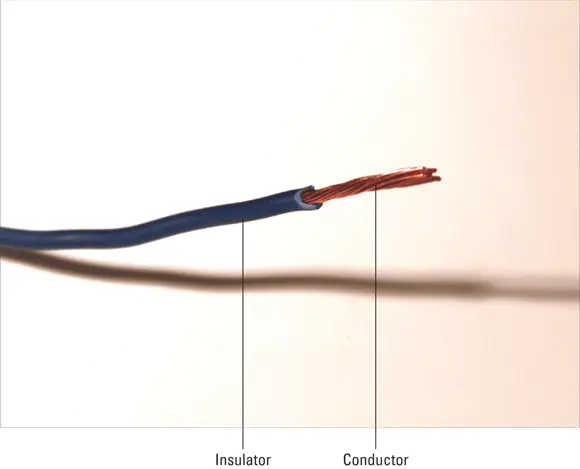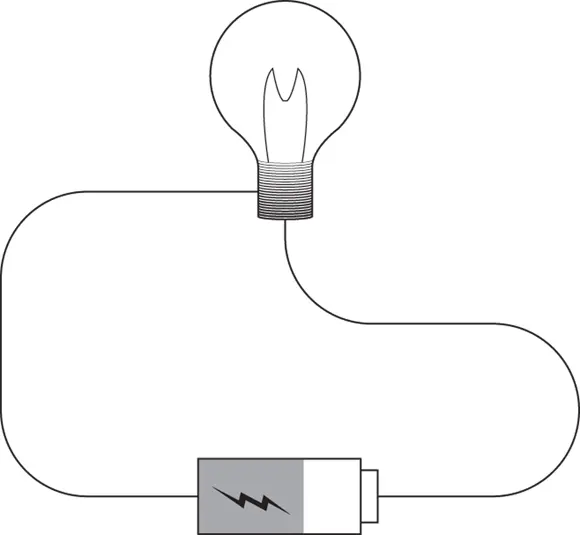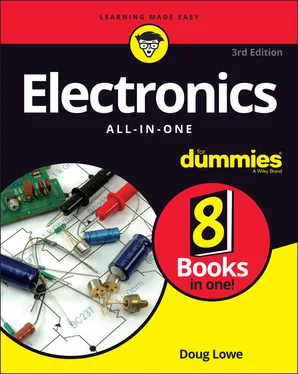Doug Lowe - Electronics All-in-One For Dummies
Здесь есть возможность читать онлайн «Doug Lowe - Electronics All-in-One For Dummies» — ознакомительный отрывок электронной книги совершенно бесплатно, а после прочтения отрывка купить полную версию. В некоторых случаях можно слушать аудио, скачать через торрент в формате fb2 и присутствует краткое содержание. Жанр: unrecognised, на английском языке. Описание произведения, (предисловие) а так же отзывы посетителей доступны на портале библиотеки ЛибКат.
- Название:Electronics All-in-One For Dummies
- Автор:
- Жанр:
- Год:неизвестен
- ISBN:нет данных
- Рейтинг книги:5 / 5. Голосов: 1
-
Избранное:Добавить в избранное
- Отзывы:
-
Ваша оценка:
- 100
- 1
- 2
- 3
- 4
- 5
Electronics All-in-One For Dummies: краткое содержание, описание и аннотация
Предлагаем к чтению аннотацию, описание, краткое содержание или предисловие (зависит от того, что написал сам автор книги «Electronics All-in-One For Dummies»). Если вы не нашли необходимую информацию о книге — напишите в комментариях, мы постараемся отыскать её.
Electronics All-in-One For Dummies,
Electronics All-in-One For Dummies
Electronics All-in-One For Dummies — читать онлайн ознакомительный отрывок
Ниже представлен текст книги, разбитый по страницам. Система сохранения места последней прочитанной страницы, позволяет с удобством читать онлайн бесплатно книгу «Electronics All-in-One For Dummies», без необходимости каждый раз заново искать на чём Вы остановились. Поставьте закладку, и сможете в любой момент перейти на страницу, на которой закончили чтение.
Интервал:
Закладка:
We know that there’s a special kind of electricity called static electricity that just sort of hangs around in the air but can be transferred to us by dragging our feet on a carpet, rubbing a balloon against our hairy arms, or forgetting to put an antistatic sheet in the dryer. And finally, we know that electricity can be very dangerous. In fact, dangerous enough that for almost 100 years electricity was used to administer the death penalty. Every year, hundreds of people die in the United States from accidental electrocutions.
But Really, What Is Electricity?
In the previous section, I list several ideas most of us have about electricity based on everyday experience. But the reality of electricity is something very different. Chapter 2of this minibook is devoted to a deeper look at the nature of electricity, but for the purposes of this chapter, I want to start by introducing you to three very basic concepts of electricity: namely, electric charge , electric current , and electric circuit .
Electric charge refers to a fundamental property of matter that even physicists as smart as Neil deGrasse Tyson don’t totally understand. Suffice it to say that two of the tiny particles that make up atoms — protons and electrons — are the bearers of electric charge. There are two types of charge: positive and negative . Protons have positive charge, electrons have negative charge.Electric charge is one of the basic forces of nature that hold the universe together. Positive and negative charges are irresistibly attracted to each other. Thus, the attraction of negatively charged electrons to positively charged protons hold atoms together.If an atom has the same number of protons as it has electrons, the positive charge of the protons balances out the negative charge of the electrons, and the atom itself has no overall charge.However, if an atom loses one of its electrons, the atom will have an extra proton, which gives the atom a net positive charge. When an atom has a net positive charge, it goes looking for an electron to restore its balanced charge.Similarly, if an atom somehow picks up an extra electron, the atom has a net negative charge. When this happens, the atom goes looking for a way to get rid of the extra electron to once again restore balance. Okay, technically, atoms don’t really go “looking” for anything. They don’t have eyes, and they don’t have minds that are troubled when they’re short an electron or have a few too many. However, the natural attraction of negative to positive charges causes atoms that are short an electron to be attracted to atoms that are long an electron. When they find each other, something almost magic happens… . The atom with the extra electron gives its electron to the atom that’s missing an electron. Thus, the charge represented by the electron moves from one atom to another, which brings us to the second important concept …
Electric current refers to the flow of the electric charge carried by electrons as they jump from atom to atom. Electric current is a very familiar concept: When you turn on a light switch, electric current flows from the switch through the wire to the light, and the room is instantly illuminated.Electric current flows more easily in some types of atoms than in others. Atoms that let current flow easily are called conductors , whereas atoms that don’t let current flow easily are called insulators .Electrical wires are made of both conductors and insulators, as illustrated in Figure 1-1. Inside the wire is a conductor, such as copper or aluminum. The conductor provides a channel for the electric current to flow through. Surrounding the conductor is an outer layer of insulator, such as plastic or rubber.The insulator serves two purposes. First, it prevents you from touching the wire when current is flowing, thus preventing you from being the recipient of a nasty shock. But just as importantly, the insulator prevents the conductor inside the wire from touching the conductor inside a nearby wire. If the conductors were allowed to touch, the result would be a short circuit , which brings us to the third important concept …
An electric circuit is a closed loop made of conductors and other electrical elements through which electric current can flow. For example, Figure 1-2 shows a very simple electrical circuit that consists of three elements: a battery, a lamp, and an electrical wire that connects the two.The circuit shown in Figure 1-2 is, as I already said, very simple. Circuits can get much more complex, consisting of dozens, hundreds, or even thousands or millions of separate components, all connected with conductors in precisely orchestrated ways so that each component can do its bit to contribute to the overall purpose of the circuit. But all circuits must obey the basic principle of a closed loop. All circuits must create a closed loop that provides a complete path from the source of voltage (in this case, the battery) through the various components that make up the circuit (in this case, the lamp) and back to the source (again, the battery).

FIGURE 1-1:An insulated wire consists of a conductor surrounded by an insulator.

FIGURE 1-2:A simple electrical circuit consisting of a battery, a lamp, and some wire.
What Is Electronics?
One of the reasons I started this chapter with the history lesson about Thomas Edison was to point out that when the whole field of electronics was invented in 1883, electrical devices had already been around for at least 100 years. For example:
Benjamin Franklin was flying kites in thunderstorms more than 100 years before.
The first electric batteries were invented by a fellow named Alessandro Volta in 1800. Volta’s contribution is so important that the common term volt is named for him. (There is some archeological evidence that the ancient Parthian Empire may have invented the electric battery in the second century BC, but if so we don’t know what they used their batteries for, and their invention was forgotten for 2,000 years.)
The electric telegraph was invented in the 1830s and popularized in America by Samuel Morse, who invented the famous Morse code used to encode the alphabet and numerals into a series of short and long clicks that could be transmitted via telegraph. In 1866, a telegraph cable was laid across the Atlantic Ocean, allowing instantaneous communication between the United States and Europe.
Contrary to popular belief, Benjamin Franklin wasn’t the first to fly a kite in a thunderstorm. In 1752, he published a paper outlining his idea. Then he let a few other people try it first. After they survived, he tried the experiment himself and wound up getting all the credit. Benjamin Franklin was not only very smart ; he was also very wise.
All of these devices and many other common devices still in use today, such as light bulbs, vacuum cleaners, and toasters, are known as electrical devices . So what exactly is the difference between electrical devices and electronic devices?
The answer lies in how devices manipulate electricity to do their work. Electrical devices take the energy of electric current and transform it in simple ways into some other form of energy — most often light, heat, or motion. For example, light bulbs turn electrical energy into light so that you can stay up late at night reading this book. The heating elements in a toaster turn electrical energy into heat so that you can burn your toast. And the motor in your vacuum cleaner turns electrical energy into motion that drives a pump that sucks the burnt toast crumbs out of your carpet.
Читать дальшеИнтервал:
Закладка:
Похожие книги на «Electronics All-in-One For Dummies»
Представляем Вашему вниманию похожие книги на «Electronics All-in-One For Dummies» списком для выбора. Мы отобрали схожую по названию и смыслу литературу в надежде предоставить читателям больше вариантов отыскать новые, интересные, ещё непрочитанные произведения.
Обсуждение, отзывы о книге «Electronics All-in-One For Dummies» и просто собственные мнения читателей. Оставьте ваши комментарии, напишите, что Вы думаете о произведении, его смысле или главных героях. Укажите что конкретно понравилось, а что нет, и почему Вы так считаете.












